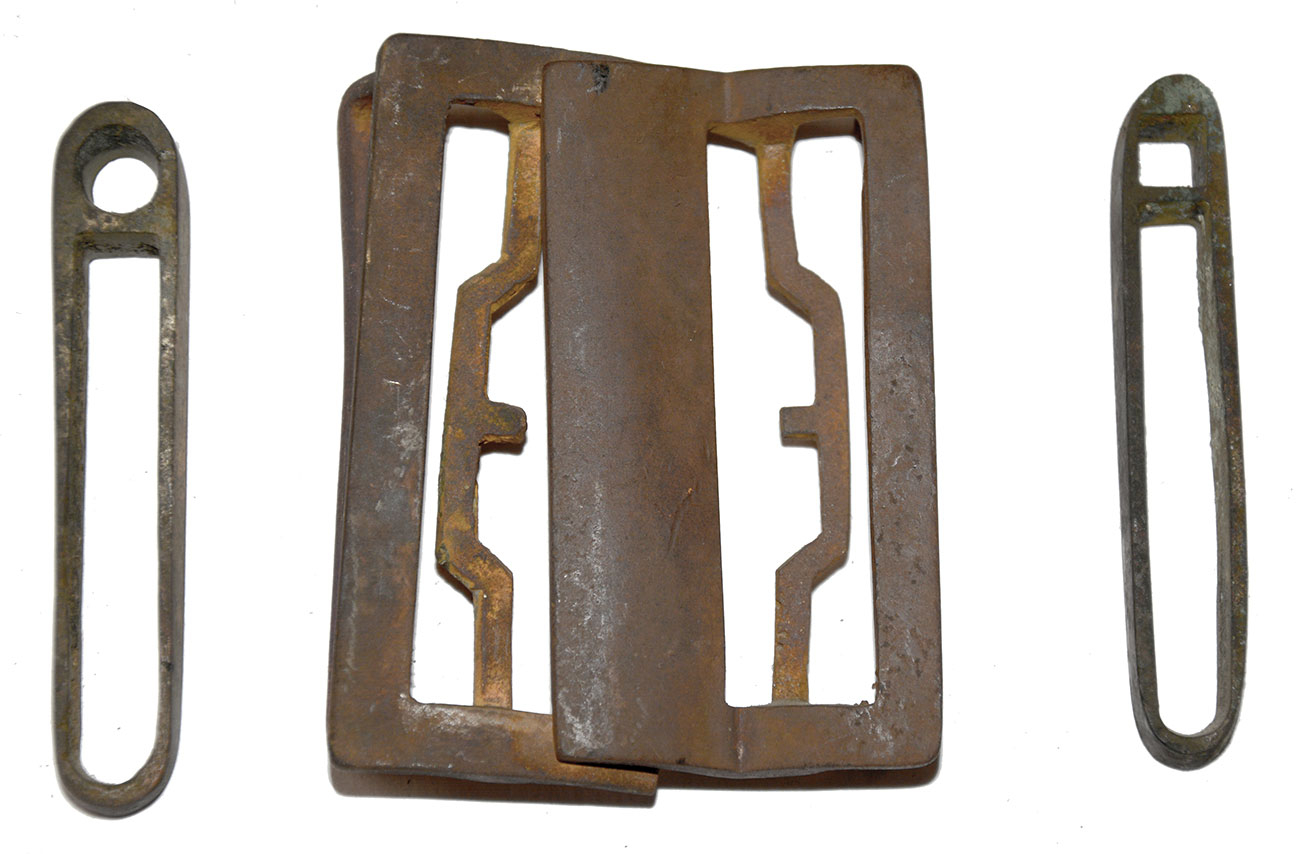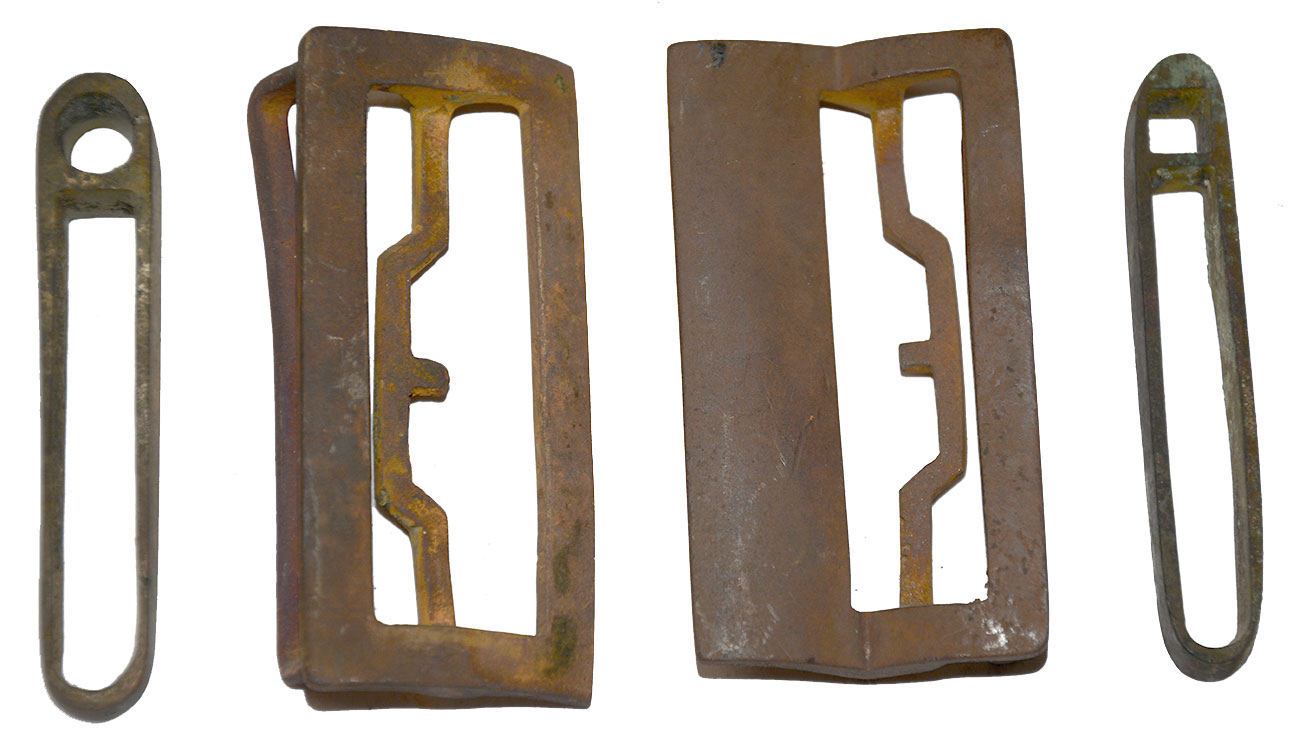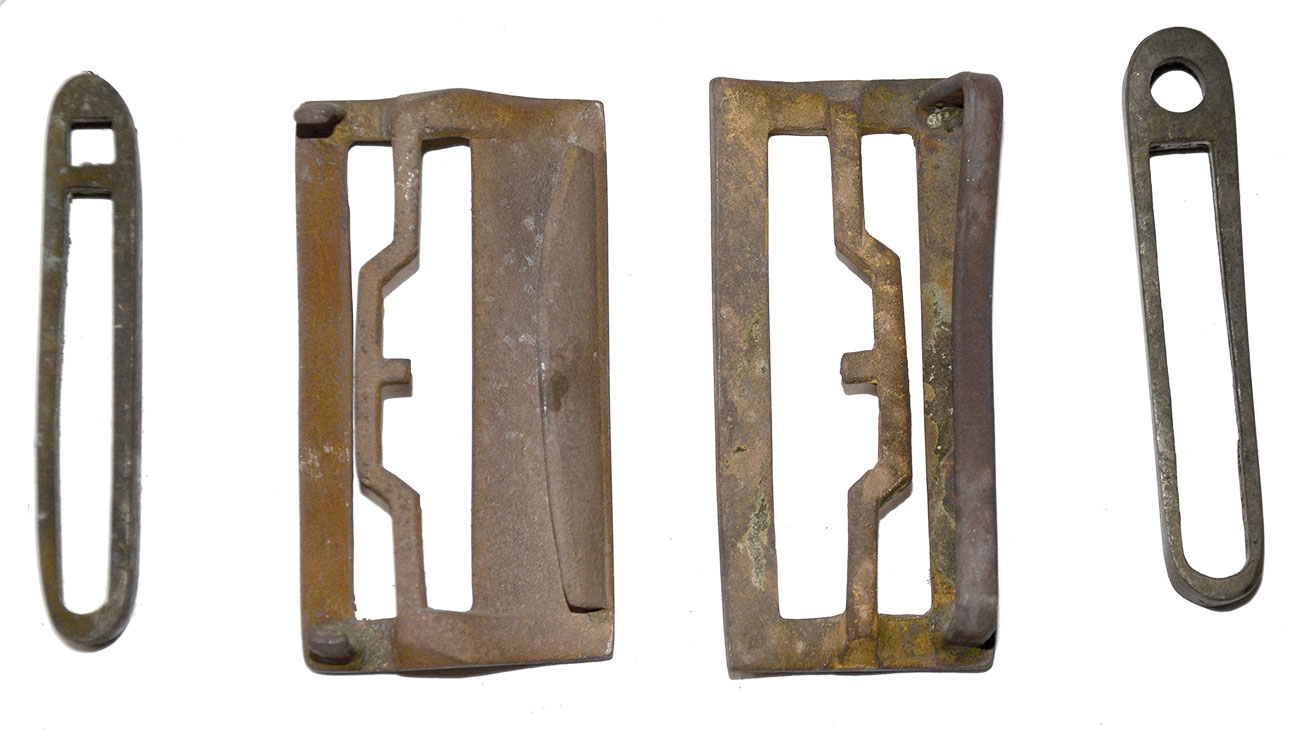site search
online catalog
EAST WOODS ANTIETAM RECOVERED M1855 RIFLEMAN’S BELT BUCKLE AND LOOPS

Hover to zoom



$395.00 ON HOLD
Quantity Available: 1
Item Code: 490-7363
This brass hardware from an 1855 pattern rifleman’s was recovered in the East Woods on the battlefield of Antietam. These belts were copies of the French 1847 pattern for the “Chasseurs a Pied,” the French version of the light infantry and riflemen who became all the rage in the European military for their mobility and elan on the battlefield, giving them a somewhat romantic appeal, being less encumbered with heavy gear than infantry of the line, operating in looser order, and with room for personal initiative on the battlefield.
These waistbelts were wide, roughly 2.2 to 2.4 inches, and meant to eliminate constricting bayonet and cartridge box crossbelts by having an integral frog to carry the bayonet and carrying the cartridge box as well as the cap pouch at the waist. This naturally increased the weight borne by the belt considerably, the brass-handled saber bayonet being a major culprit, and the belt was fitted with two brass slides having loops at the top into which the soldier would fasten the brass fixed at the end of his knapsack straps, effectively balancing his load and transferring the weight to his shoulders, at least until packs were thrown off on going into action. In 1857-58 the army equipped the 9th and 10th US Infantry with this gear, and in late 1861 imported some 10,000 sets of uniforms and equipment directly from France, but there were ready clients for military goods dealers in volunteer and militia companies both north and south by the beginning of the war. See O’Donnell and Campbell, Military Belt Plates, and photographs of soldiers wearing this belt rig.
The brass buckle is a two-part open frame with one latching into the other. Each half has large belt loop on the reverse of the outer side of the frame, through which either end of the belt passes and then doubles back. Each end is actually secured and adjusted, however, by a narrow fastening strap sewn inside the belt, which wraps around a second bar on each half of the plate, positioned in the middle of the opening, which has a small stud at center to engage one of the adjusting holes on the narrow strap. Two narrow brass slides were free-floating on the belt, having small holes at the top for those “J-hooks” found on the ends of regulation issue knapsack straps (often to the puzzlement of new collectors.)
The two sections of the buckle have a mix of light brown and reddish-orange tone to the brass. One section is missing the wide belt loop, likely the reason it was lost. Both retain the bar with fastening stud. The two belt slides show a bit more as gray, with one having the hole for the J-hook round and the other more square, likely by different finishers in the factory since they seem to show up both ways. The East Woods was the scene of heavy fighting on the morning of September 17 largely between Union troops of Mansfield’s 12th Corps and Confederates under Jackson, with the area changing hands several times. If we were to guess, we’d say there is a greater likelihood this was dropped by a rifle-armed Confederate soldier. There is no real way to tell, but is a typically early-war accoutrement plate and belt rig. [sr][ph:L]
~~~~~~~~~~~~~~~~~~~~~~~~~~~~~~~~~~~
THIS ITEM, AS WITH ALL OTHER ITEMS AVAILABLE ON OUR WEB SITE,
MAY BE PURCHASED THROUGH OUR LAYAWAY PROGRAM.
CLICK HERE FOR OUR POLICIES AND TERMS.
THANK YOU!
Inquire About EAST WOODS ANTIETAM RECOVERED M1855 RIFLEMAN’S BELT BUCKLE AND LOOPS
Most Popular
Historical Firearms Stolen From The National Civil War Museum In Harrisburg, Pa »
Theft From Gravesite Of Gen. John Reynolds »
Selection Of Unframed Prints By Don Troiani »
Fine Condition Brass Infantry Bugle Insignia »
Large English Bowie Knife With Sheath 1870’S – 1880’S »
Imported (Clauberg) Us Model 1860 Light Cavalry Officer's Saber »
featured item
EXCELLENT U.S. MODEL 1840 LIGHT ARTILLERY OFFICER’S SABER WITH MINTY ETCHED BLADE
This pattern was introduced in 1840 for all mounted officers other than cavalry, but with the introduction of the 1850 patterns it was limited to officers of light artillery, making it very scarce. On top being a very hard to find pattern, this one… (870-635). Learn More »


